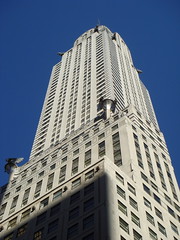
Chrysler Building in New York NY
Our Gallery
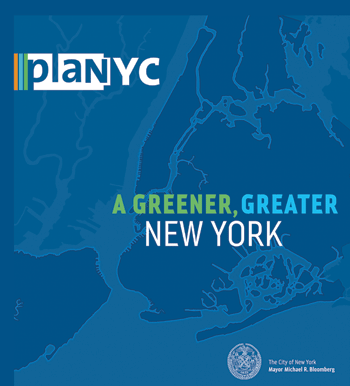 Back to Issue 4
Back to Issue 4
Introduction
New York City is stronger than ever. Out of the chaos of yesteryear, a city on the move has emerged. Today, more people ride public transit than fifty years ago, crime is at a forty-year low, the city’s bonds have their best rating ever and unemployment is at an all-time low. Last year, a record 44 million tourists from around the country and world came to the Big Apple, and for the first time since World War II the average New Yorker is living longer than the average American.
But with prosperity comes challenges, as the population of New York is expected to grow to over nine million by 2030. The infrastructure of our city is as old as its legends. With the influx, the quality of air, water and land will be tested throughout the five boroughs. And most of all, New York must face implications of global climate change.
The Planyc put forth by Mayor Bloomberg is a set of active solutions to these problems, instead of reactive fixes. The moment of facing up to our collective responsibility for this city’s future is now, so that we pass along a Big Apple to our children that will be sustainable. We must build affordable housing for all, neighborhoods with enough playgrounds, upgrade the 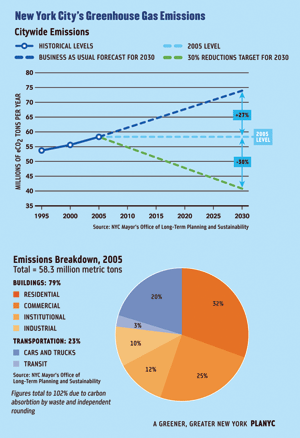 aging water and power systems, end congestion on the roads and bring the subway system into the modern era. Together, we can create a greener, greater New York.
aging water and power systems, end congestion on the roads and bring the subway system into the modern era. Together, we can create a greener, greater New York.
Land
Housing
To meet the needs of the expected population boom, New York will need 265,000 more housing units by 2030. We also need to have affordable housing. The Plan is expand the existing supply of units by 300,000 to 500,000 units to help drive down the price of land, while directing the growth to areas that can be serviced by public transportation.
This action will be paired with creative financing, expanding the use of inclusionary zoning and developing homeownership programs for low-income New Yorkers. With these strategies, new housing will match the vision of New York as a city of opportunity for all.
Open Space
Currently, two million New Yorkers, including hundreds of thousands of children, live more than 10 minutes from a park. The Plan will create new recreational facilities across every borough, opening hundreds of schoolyards as local playgrounds, reclaiming undeveloped sites that were designated parks but never finished, and expanding usable hours at existing fields by installing additional lights and turf fields.
New greenstreets and public plazas in every community will improve the streets and sidewalks and create a more inviting public realm.
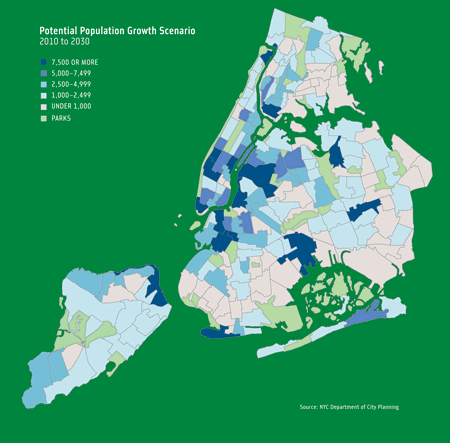
Water
Water Network
New York City has the luxury of an abundant water supply, but the supply system faces challenges. First, the reservoirs will be protected from development, and the aging aqueducts and water tunnels will be updated. Also, a new filtration plant for the Croton System will be placed at its source. And to make sure there is always water for the future, an aggressive watershed protection program will be implemented for the Catskill and Delaware systems.
New York will also create redundancy for the aqueducts that carry the water to the city through a combination of water conservation measures, new infrastructure like the New Croton Aqueduct, and evaluating new water sources, like groundwater.
And best of all, Water Tunnel Number 3 will be finished for in-city distribution.
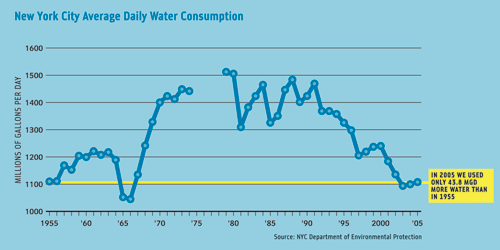
Water Quality
New York has 600 miles of coastline, making it one of the world’s greatest waterfront cities. The revitalization of the waterfront has been a major goal of all five boroughs over the last five years, and this will be taken up a notch.
The Plan calls for an upgrade of wastewater treatment to help purify the most polluted tributaries. Also there will be a strategy to help clean the water before it reaches the rivers and creeks with the greening of streets, planting trees and rebuilding the wetlands.
With these initiatives, the city’s natural ecology and recreational use of the waterways will be restored.
Transportation
We also know that the speed of life in New York has always been one of its selling points. But over the last fifty years, New York has underinvested in its transit and road networks. Currently, all subway routes, river crossings and commuter rail lines are at their maximum capacity, making transportation the greatest barrier to growth.
Improvements to the transportation system will include major expansions of the infrastructure, improved bus service, and expanded ferry system. In a help to reduce gridlocks a new and more streamlined bike master plan will be installed into the city. One major change will also be congestion pricing, a proven strategy that charges drivers a daily fee to use the city’s densest business district.
To pay for all this, a new regional financing entity, the SMART Financing Authority, will rely on three funding streams. This will include revenues from the congestion pricing, which will hopefully be matched by the state government. The authority will also use grants to achieve a steady improvement and repair rate, enabling the entire metropolitan region to achieve a new standard of mobility.
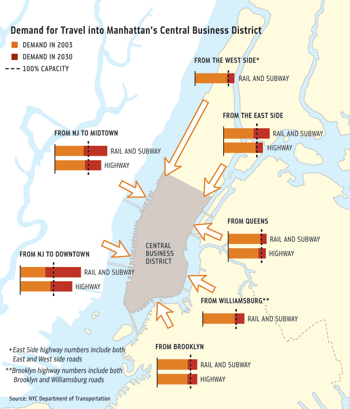
Energy
Today, New Yorkers face ever rising energy costs, air pollution and greenhouse emissions from a combination of aging infrastructure and growth. The plan will encourage the addition of new, clean power plants, promote repowering of current plants and build a market for renewable energy. As the renewable energy system gains market share, older and most polluting power plants, cleaning the air and reducing greenhouse gas emissions.
To reduce demand, the plan also calls for a the largest energy consumers—institutional buildings, commercial and industrial buildings—to accelerate efficiency upgrades. Through a system of incentives, mandates and challenges, the demand, and cost of energy, will fall.
Another aspect is to work with the state level of New York to create a New York City Energy Planning Board to help a sustainable energy network. By managing demand and increasing supply, the city can help the overall power and heating bill plunge by more than $2 billion to $4 billion, with an average saving of $230 per New York household per year by 2015.

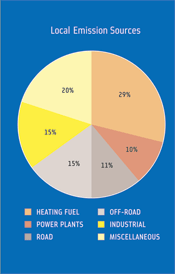 Air Quality
Air Quality
Currenly, asthma affects too many New Yorkers in way too many neighborhoods. Despite recent improvements, New York City is still behind national air quality standards.
Transportation is responsible for more than 50 percent of the total local air pollution, which is why the city will call for more New Yorkers to shift to mass transit. This will be complimented fuel efficiency, cleaner fuels, cleaner or upgraded engines, and the installation of anti-idling technology.
To track the progress, the plan also calls for the largest local air quality studies in the United States. The goal is the achieve the cleanest air quality of any big city in America.
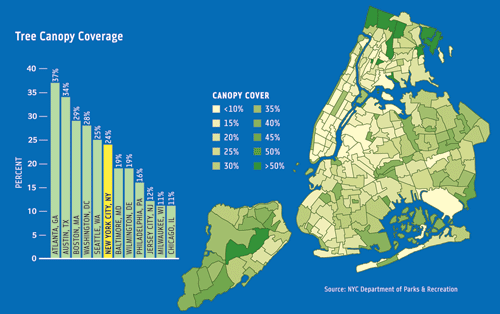
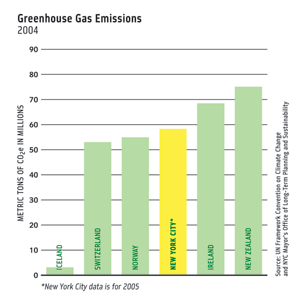 Climate Change
Climate Change
Collectively, all these programs above are to address the greatest challenge of all: global warming. Unless greenhouse emissions are substantially reduced by the middle of the century, the impacts of climate change will be irreversible. New York, being a coastal city, is very vulnerable.
The plan’s climate change strategy is the sum of all the parts, each working to help the other. All of Planyc is geared to reducing the number of cars to building cleaner power plants to improving quality of life for all New Yorkers. All while reducing greenhouse emissions.
With all these parts of the plan, hopefully an additional 15.6 metric tons of greenhouse gases will be kept from entering the atmosphere.
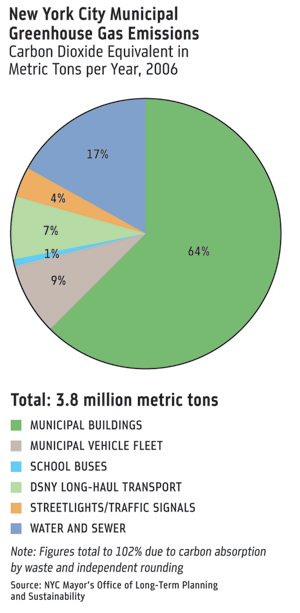

| Jobs | 5 | Real Estate - Sale | 0 | |
| Real Estate - Rent | 0 | Buy / Sell / Trade | 0 | |
| Personals | 0 | Automotive | 0 | |

| Daily Poll | ||
|